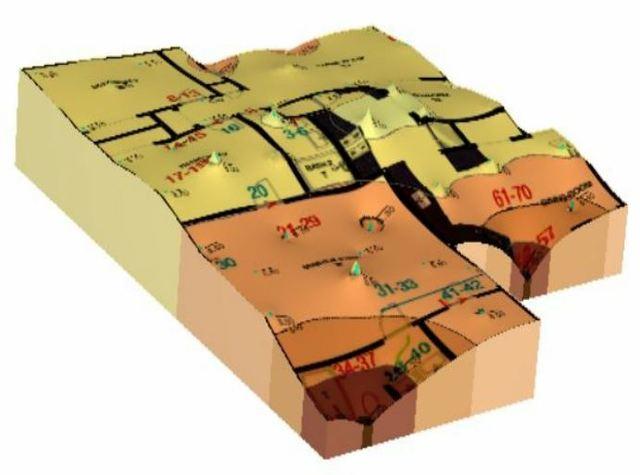Chimney Separation in Tucson, AZ
Challenge
The owner of this mid-century Tucson, AZ area home reached out to us after noticing the home’s chimney had begun to pull away from the house. The Homeowner wanted to maintain both the property value as well as ensure peace of mind. An initial Level A Foundation Inspection was completed, and it was determined that a Forensic Foundation Inspection, or Level B Foundation Inspection was needed.
Scope of Services
The extent and scope of this manometer and foundation survey and assessment is detailed as follows:
• Perform a manometer survey.
• Locate the areas of foundation and floor slab failure, if any.
• Visually inspect and record the interior and the exterior of the location.
• Determine the extent of the foundation failure, if any.
• Prepare a documented repair plan if needed.
Foundation Footprint: A drawing of the footprint of the first floor was created and is included in this report.
Exterior Inspection: The exterior of the location was visually inspected. Items such as foundation cracks, exterior wall cracks, improper grading, type of structure, poor drainage, gutters or no gutters, bowed retaining walls, large trees close to the foundation and any type of obstructions that may or may not influence the repair process were noted and recorded.
Interior Inspection: The interior of the location was visually inspected. Items such as floor cracks, wall cracks, ceiling cracks, sloping floors, uneven counter tops, doors and windows that are out of alignment, cracked window glass and bowed walls were noted and recorded.
Manometer Survey: The manometer survey, also known as a floor survey, is a measurement of the differences of interior floor elevations. The flatness of the interior floor was measured using a highly accurate survey device known as a Manometer. The entire interior floor area was surveyed and the elevations were recorded. These data points were then entered into a computer program that provides a topographical map showing the high and low elevation contours of the floor surface. This topographical map shows where the foundation is no longer level and shows where support and stabilization is needed. The floor survey also demonstrates whether any floor slab heave or settlement exists.
After examining the home and performing the manometer survey, Arizona Foundation Solutions believes the fireplace is separating as shown by the damage (Signs of Stress). Separation can be caused by one or any combination of many factors including sub-grade saturation of moisture due to poor drainage, years of storm runoff, plumbing leaks, improper compaction, the lack of a proper foundation system, and/or (in most cases) natural earth movement. AZFS believes the home could be experiencing minor foundation settlement at the southwestern portion of the home and the kitchen/dining room area as shown by the damage (Signs of Stress).
Solution
Arizona Foundation Solutions believes that the proper way to permanently stop the fireplace separation is to underpin the areas that are experiencing movement. Underpinning is the process of installing deep foundation elements called piles. Piles are engineered foundation supports that are driven down past the unstable soils and are then locked up into load bearing strata, which can support the loads that are transferred to them. Once the piles have been installed, they can be used to lift the perimeter foundation up to it’s Highest Practical Maximum. The piles should be placed at the eastern portion of the fireplace.
The settlement at the southwestern portion of the home and the kitchen/dining room area appear to be minor at this point in time. A protection plan has been designed to stop the area from any additional settlement and further damages. AZFS can permanently stabilize this area to protect the foundation from future settlement at the Homeowners discretion.
For the protection plan Arizona Foundation Solutions believes that the proper way to permanently stop the perimeter foundation settlement is to underpin the areas that are experiencing movement. Underpinning is the process of installing deep foundation elements called piles. Piles are engineered foundation supports that are driven down past the unstable soils and are then locked up into load bearing strata, which can support the loads that are transferred to them. Once the piles have been installed, they can be used to lift the perimeter foundation up to it’s Highest Practical Maximum. The piles should be spaced approximately eight feet on center and should start and stop near the hinge points of movement (exact spacing to be determined after load bearing calculations). In this case, the piles would be located at the southwestern portion of the home and the kitchen/dining room area.
The marriage cracks appear to be minor and no repairs are recommended at this time.
Since storm runoff is responsible for the majority of the moisture that pools next to the foundation, gutters need to be installed to prevent the storm runoff from increasing the amount of foundation movement. A proper gutter system should be installed to discharge the storm runoff a minimum of 10 feet, preferably 20 feet away from the foundation. We do not recommend installing gutters that discharge next to the foundation as this will only increase the probability of a foundation problem.




